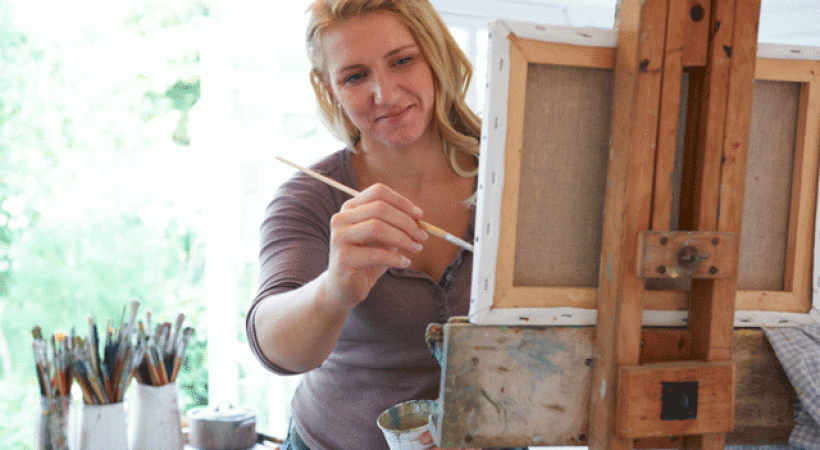
Bringing Art to Therapy and Me to Life
-
When Rae Freeman started bringing her teenage and current art to therapy, she found she was finally able to share long-suppressed emotions
-
We have art therapists on welldoing.org – find them here
Art was the unspoken battleground with my parents – the subject in their eyes with the least prospect and value. As subjects were cast aside I clung onto art for dear life, finding compromise in doing it as an ‘extra’ subject – and latterly through architecture.
As a family we never set foot in an art gallery. My parents didn’t engage with art or music. Their world - and they, as I now understand - avoid emotion. Seeing or engaging with emotive subjects – art and music – seems to also fall into that category. For want of anything better – in our emotionally devoid home – I stuffed every ounce of feeling and hope, despair, vulnerability and sadness into art. It maybe then isn’t that much of a surprise that art became a topic of conversation in therapy.
One particular painting found its way into the therapy room early in our conversations. Physically large and emotionally charged in content – it was also a vehicle for discussing my parents and how we related. The painting – done when I was 18 – referenced self-harm and the strong feelings I had for other girls. The messages were there, a little obscured but readable.
My parents never engaged, discussed or even really looked at the painting. Ever since school my Dad has tried to throw it out – and given an ever-increasingly extreme reason for needing to do so. To him it is a scar, a visible horror of my being, topics (and by inference who I am) that he would much prefer out of sight. No longer living at home the painting has an ever more precarious future.
It represents the me that was. A confused, scared and lonely teenager, art was my way of trying to start a conversation about who I was, conversations that were trapped and unwelcome with no obvious outlets at home. Unable to start any conversation with my parents – and stifled, scared and confused by the emotional silence – I ran away travelling. Ten years passed and paintbrushes collected dust.
After several false starts of bringing art to therapy, I did bring the most personal eventually. There were crude teenage paintings – prompts of crushes, rejection of a religious upbringing and emotive statements questioning the need to starve oneself. In a small way I used this as a way to bring topics to my therapist that were me, that still are me, but pushed deep down. A part, which was lonely, confused and scared – but also hopeful, open and inquisitive.
My therapist's unwavering acceptance is invaluable to me. I didn’t know when we first started out working together that she had an interest in art. Part of me was apprehensive to reveal any of my work; so amateurish, so crude, so ungainly and gawky, so unsophisticated. The apprehension aside, I sense, and this is the key, that this means of non-verbal expression is valued in therapy, my therapist is open to it, understands it – and so I can share in a way I have never shared with my parents.
To my parents, art – much like me – seems to be of no-value and there is no desire for engagement. In my therapist's presence and with her support, it feels no coincidence that art has again become part of my life. The topic is currently therapy and now in printed form. My first foray into printmaking was bought to my therapy session for discussion. Cringingly I explained its relevance, to my therapist, to her room and its meaning to me. Art is still the receptacle for underlying feelings, worries, hopes and dreams – only now I can share them with someone – and with the confidence that they don’t need to be hidden or discarded or thrown away.










